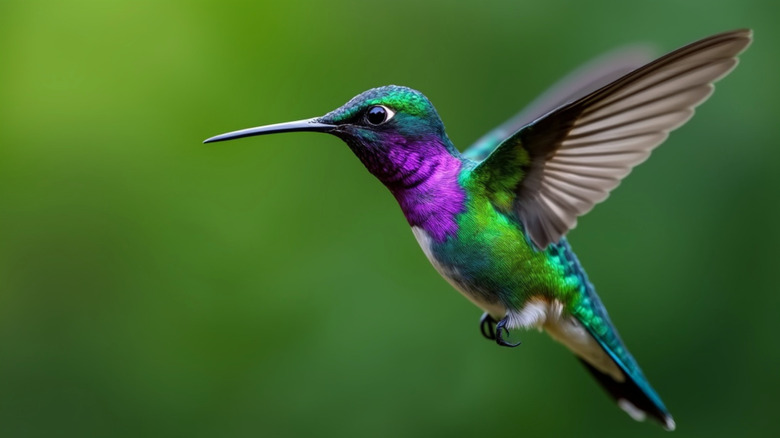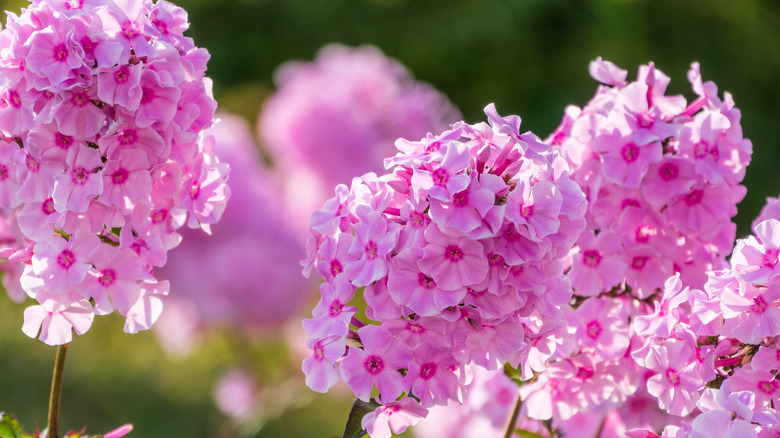The Gorgeous Garden Flower That Keeps Hummingbirds Visiting Past Summer
When we think of pollinators, bees and butterflies usually come to mind. But hummingbirds also play an important role in pollination. They are nectarivorous, meaning they feed on nectar from flowers, and can visit anywhere from 1,000 to 3,000 flowers a day. In fact, their constant movement makes them highly efficient in transferring pollen, so having them in your garden will promote a healthy ecosystem. To attract hummingbirds to your garden, you will need to plant flowers that they love, such as the garden phlox (Phlox paniculata).
This perennial is native to Eastern North America and grows in USDA zones 4-8. They are bright, tubular flowers that are perfectly shaped for pollinators with long beaks and tongues, like hummingbirds. Once the garden phlox begins to produce flowers, they typically stay in bloom for 6 weeks or longer, becoming a constant nectar source throughout the summer and even into autumn.
The garden phlox has a mild and sweet fragrance which also attracts hummingbirds to your garden. They may be small, but the little birds have a keen sense of smell that can lead them to food and help them avoid danger. Once planted, you can expect repeat visits by the hummingbirds and extended activity in your garden.
How to grow tall garden phlox for a hummingbird-friendly garden
If you want to create an oasis for hummingbirds, you must learn how to successfully grow a phlox plant. The first step is to choose an ideal location in your garden. Pick an area that gets full to partial sunlight to encourage stronger flowering and reduce the growth of mildew. The soil it is planted in should be moist but properly drained since poor drainage could lead to root rot. Air circulation is equally important. You must make sure the plants are spaced 18 inches apart to prevent crowding. With the right conditions, garden phlox can grow up to 4 feet tall.
To make sure the plant is healthy, you may want to consider adding organic compost. The best way to care for phlox flowers is to water regularly, but avoid overwatering. Here's a pro tip – - add some mulch to conserve moisture but keep it away from the plant base. You can also try deadheading faded blooms, which cleans up the plant and encourages healthier growth.
To further boost your garden's ecosystem, you can plant other perennials that go along beautifully with the phlox. Daylilies (Hemerocallis), salvia (Salvia officinalis L.), yarrow (Achillea millefolium), coneflowers (Echinacea purpurea), and bee balm (Monarda didyma) are complimentary additions. Give the garden phlox what it needs, and it will fill your backyard with beautiful hummingbird activity this summer and beyond.

